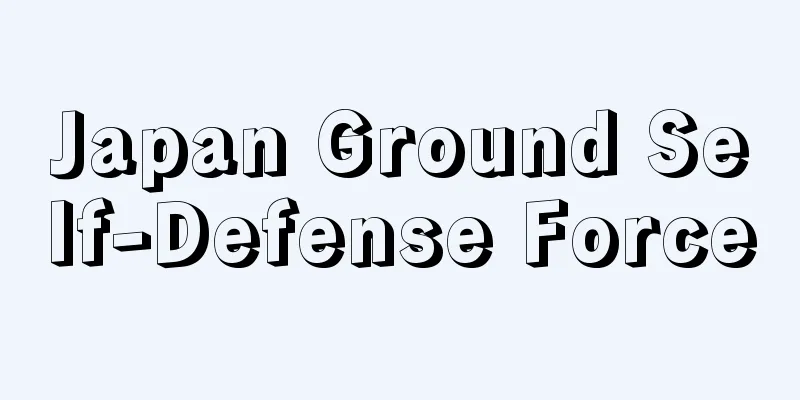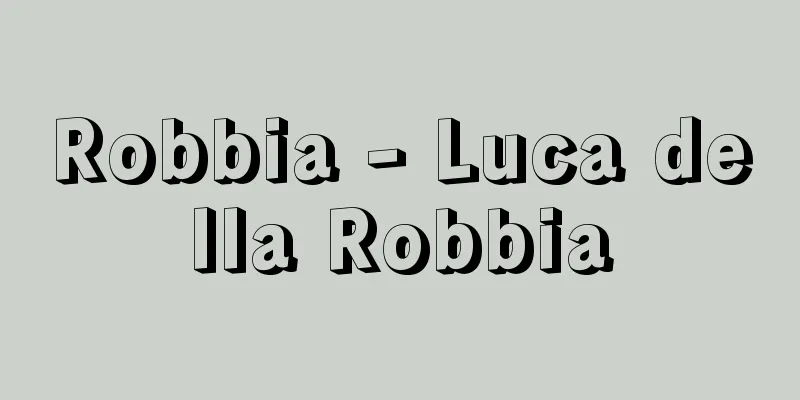Complex

|
When a single atom or ion (usually a metal ion) is at the center and several other atoms, ions, molecules, or atomic groups (these are called ligands) are coordinated in a directional and three-dimensional manner around it to form a single atomic group, this is called a complex. In chemical formulas, they are enclosed in [ ] to indicate that they are complexes. When the complex is an ion, it is called a complex ion. Compounds that contain complexes are generally called complex compounds, and are used to distinguish them from molecular compounds. The chemical bond between the ligand and the central atom may be either ionic or covalent, but in many cases it is somewhere between the two and contains elements of both. This phenomenon is seen in many compounds. For example, the sulfate ion SO 4 2- and chromate ion CrO 4 2- are complexes in which four O 2- atoms are coordinated to form a regular tetrahedron around the central atoms S 6+ and Cr 6+ , respectively. Also, molecules such as [Al(H 2 O) 6 ] 3+ found in crystals of alum KAl(SO 4 ) 2・12H 2 O, [Fe(CN) 6 ] 4- in yellow prussicaceous salt K 4 [Fe(CN) 6 ]・3H 2 O, and [Co(NO 2 ) 3 (NH 3 ) 3 ] are complexes (complex ions ) in which ligands such as H 2 O, (CN) - , NO 2 - , and NH 3 are coordinated octahedrally to central atoms such as Al 3+ , Fe 2+, and Co 3+, respectively . However, in the above examples, such as the sulfate ion, the central atom is a nonmetallic element, so it is not usually called a complex. In that sense, when the central atom is a metal atom, it is sometimes called a metal complex. Many metal salts contain complexes, and in aqueous solution they often exist as complex ions, for example, [Cu(H 2 O) 6 ] 2+ in aqueous solution of copper(II) sulfate. [Nakahara Katsunori] Polynuclear ComplexesComplexes with two central atoms are called binuclear or polynuclear complexes, and those with two or more central atoms are called polynuclear complexes. For example, copper(II) acetate monohydrate is usually written as Cu(CH 3 COO) 2・H 2 O, but it is actually a polynuclear complex [Cu 2 (CH 3 COO) 4 (H 2 O) 2 ] as shown in , and basic chromium(III) acetate Cr 3 (CH 3 COO) 7 (OH) 2・2H 2 O is [Cr 3 O(CH 3 COO) 6 (H 2 O) 3 ](CH 3 COO), in which three chromium atoms form an equilateral triangle with an oxygen atom at the center, two CH 3 COOs bridging each side of the triangle, and each chromium atom is coordinated with one H 2 O molecule, making it an octahedral hexacoordinated trinuclear complex. Similarly, basic beryllium acetate Be 4 O(CH 3 COO) 6 is a tetranuclear complex in which four beryllium atoms form a tetrahedron with an oxygen atom at the center and six CH 3 COO - bridges between the six edges, as shown in Aluminum hydroxide Al(OH) 3 can be said to be an infinite polynuclear complex (usually called a giant molecule) in which octahedral hexacoordinated [Al(OH) 6 ] 3 - are linked together infinitely with OH - bridges, as shown in There are many such examples, and most transition metal salts contain mononuclear or polynuclear complexes of this type. When the ligand is a chelating ligand, i.e. when one ligand coordinates to one central atom with two or more coordinating atoms, the resulting complex is called a chelate complex. [Nakahara Katsunori] "The Fundamentals of Coordination Chemistry - Werner Complexes and Organometallic Complexes" by Masatoshi Watanabe, Shigenobu Yano, and Takao Ikariya (1989, Kodansha)" ▽ "Beyond Molecules - The World of Complexes" edited by the Coordination Chemistry Research Group (1991, Kagaku Dojin)" ▽ "Coordination Chemistry, revised 2nd edition by Kazuo Yamazaki, Yuzo Yoshikawa, Ryuichi Ikeda, and Hiroyuki Nakamura (1993, Shokabo)" ▽ "Dictionary of Inorganic Compounds and Complexes" by Katsumi Nakahara (1997, Kodansha)" ▽ "Graduate School Coordination Chemistry" edited by Shintake Iwamoto, Hiroshi Ogino, Yoshihiko Hisashi, and Osamu Yamauchi (2000, Kodansha)" ▽ "New Edition Coordination Chemistry - Fundamentals and Latest Developments" edited by the Basic Coordination Engineering Research Group (2002, Kodansha)" ▽ "The Story of Complexes" by Masatoshi Watanabe, Akira Yamazaki, and Hiroyuki Kono (2004, Yoneda Publishing, Sangyo Tosho Publishing) [Reference items] | |©Shogakukan "> Structure of copper(II) acetate monohydrate (Figure A) ©Shogakukan "> Structure of basic beryllium acetate (Figure B) ©Shogakukan "> Structure of aluminum hydroxide (Figure C) Source: Shogakukan Encyclopedia Nipponica About Encyclopedia Nipponica Information | Legend |
|
一つの原子あるいはイオン(普通は金属イオン)を中心として、その周りにいくつかの他の原子、イオン、分子あるいは原子団(これらを配位子という)が、方向性をもって立体的に配位し、一つの原子集団をつくっているとき、これを錯体といっている。化学式では[ ]でくくり、錯体であることを示す。また錯体がイオンである場合、錯イオンという。錯体を含む化合物を一般に錯化合物といい、分子化合物と区別するために用いられる。 配位子と中心原子との間の化学結合は、イオン結合性、共有結合性いずれでもよく、多くの場合、その両者の中間を示し、両方の要素をもっている。このことは多くの化合物にみられ、たとえば硫酸イオンSO42-、クロム酸イオンCrO42-などでは、それぞれ中心原子S6+、Cr6+の周りに、四つのO2-が正四面体をつくるように配位した錯体であり、また、ミョウバンKAl(SO4)2・12H2Oの結晶中にみられる[Al(H2O)6]3+や、黄血塩のK4[Fe(CN)6]・3H2O中の[Fe(CN)6]4-あるいは[Co(NO2)3(NH3)3]のような分子は、それぞれAl3+、Fe2+、Co3+などを中心原子として、H2O、(CN)-、NO2-、NH3などの配位子が八面体型に配位してできた錯体(錯イオン)である。ただし以上の例で、硫酸イオンのような場合には、中心原子が非金属元素であるため、普通は錯体といわないことが多い。その意味で中心原子が金属原子の場合には金属錯体ということもある。 多くの金属塩類は錯体を含むのが普通で、水溶液中では錯イオンとして存在することが多い。たとえば、硫酸銅(Ⅱ)の水溶液中では[Cu(H2O)6]2+が存在する。 [中原勝儼] 多核錯体錯体のうち、中心原子が二つある場合を二核錯体あるいは複核錯体、二つ以上ある場合を多核錯体といっている。たとえば、酢酸銅(Ⅱ)一水和物は普通Cu(CH3COO)2・H2Oのように書かれるが、実はのような複核錯体[Cu2(CH3COO)4(H2O)2]であり、同じく塩基性酢酸クロム(Ⅲ)Cr3(CH3COO)7(OH)2・2H2Oは[Cr3O(CH3COO)6(H2O)3](CH3COO)であって、3個のクロム原子が正三角形をつくり、その中心に酸素原子が位置し、三角形の各辺に沿って二つのCH3COOが橋架けし、それぞれのクロム原子にH2O分子が一つずつ配位した八面体型6配位の三核錯体である。同様に塩基性酢酸ベリリウムBe4O(CH3COO)6といわれているものは、のように四つのベリリウム原子がほとんど四面体をつくり、中心に酸素原子が位置し、六つの稜(りょう)を六つのCH3COO-が橋架けしてできた四核錯体である。また水酸化アルミニウムAl(OH)3は、のように八面体型6配位の[Al(OH)6]3-がOH-を橋架けとして無限に連なった無限多核錯体(通常、巨大分子といっている)であるといえる。このような例はきわめて多く、遷移金属の塩類はほとんどがこの種の単核錯体ないし多核錯体を含むものである。 配位子がキレート配位子である場合、すなわち、一つの中心原子に一つの配位子が二つ以上の配位原子で配位するときは、できた錯体をキレート錯体という。 [中原勝儼] 『渡部正利・矢野重信・碇屋隆雄著『錯体化学の基礎――ウェルナー錯体と有機金属錯体』(1989・講談社)』▽『錯体化学研究会編『分子を超えて――錯体の世界』(1991・化学同人)』▽『山崎一雄・吉川雄三・池田龍一・中村大雄著『錯体化学』改訂第2版(1993・裳華房)』▽『中原勝儼著『無機化合物・錯体辞典』(1997・講談社)』▽『岩本振武・荻野博・久司佳彦・山内脩編『大学院錯体化学』(2000・講談社)』▽『基礎錯体工学研究会編『新版 錯体化学――基礎と最新の展開』(2002・講談社)』▽『渡部正利・山崎昶・河野博之著『錯体のはなし』(2004・米田出版、産業図書発売)』 [参照項目] | |©Shogakukan"> 酢酸銅(Ⅱ)一水和物の構造〔図A〕 ©Shogakukan"> 塩基性酢酸ベリリウムの構造〔図B〕 ©Shogakukan"> 水酸化アルミニウムの構造〔図C〕 出典 小学館 日本大百科全書(ニッポニカ)日本大百科全書(ニッポニカ)について 情報 | 凡例 |
>>: Saxophone - saxophone (English spelling)
Recommend
Carotid sinus reflex
A reflex phenomenon in which arterial pressure dro...
Vinyl acetate
...The product made industrially from amyl alcoho...
Ghilzai (English spelling)
A powerful branch of the Pashtun people of Afghani...
Navis (English spelling)
[raw]? [Died] 192 B.C. The last king of Sparta (re...
The American Mercury
An American monthly magazine founded in 1924 by H....
Svyatopolk-Mirskii, PD (English spelling) SvyatopolkMirskiiPD
...This war was completely unpopular with the peo...
ṣaḍ-aṅga (English spelling) sadanga
...The techniques of mural painting are described...
Vienna Philharmonic Orchestra (English: Wiener Philharmoniker)
Founded in 1842, this is one of Europe's leadi...
Kamishari Village
...Population: 5,705 (1995). In 1943, it was sepa...
Silver in India
Silver coins minted in 1619 (Genwa 5) for use with...
Kunitomo
A place name in Sakata County, Omi Province, now N...
Phosphate ore (Rinkou (English spelling) phosphorite)
A mineral whose main component is phosphorus (P). ...
paranormal phenomena
…paranormal phenomena. In parapsychology, it is c...
Yuan Shao
One of the heroes of the late Eastern Han Dynasty...
Backwards Fan - Ushiromuki Fan
...The gas volume handled is up to about 21,000 m...









